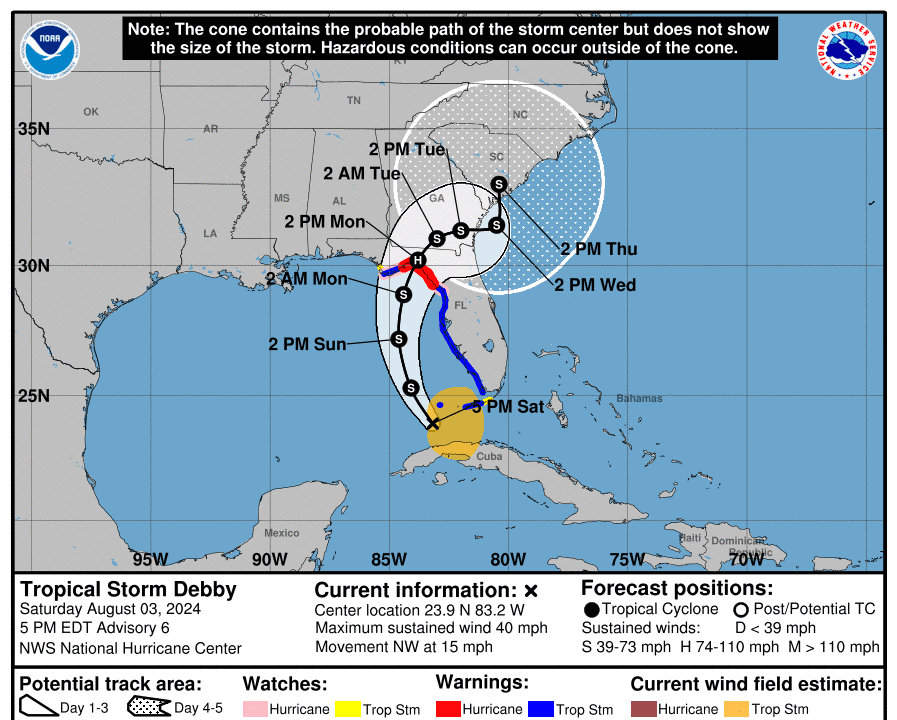Tropical Storm Debby has appeared in the Gulf of Mexico and is now expected to make landfall as a hurricane in the “Big Bend” area of the Florida Panhandle, according to the National Hurricane Center.
As of 5 p.m. on Aug. 3, it has sustained winds of 40 mph but is expected to boast hurricane-force winds of more than 74 mph by the time it makes landfall on the afternoon of Aug. 5.





